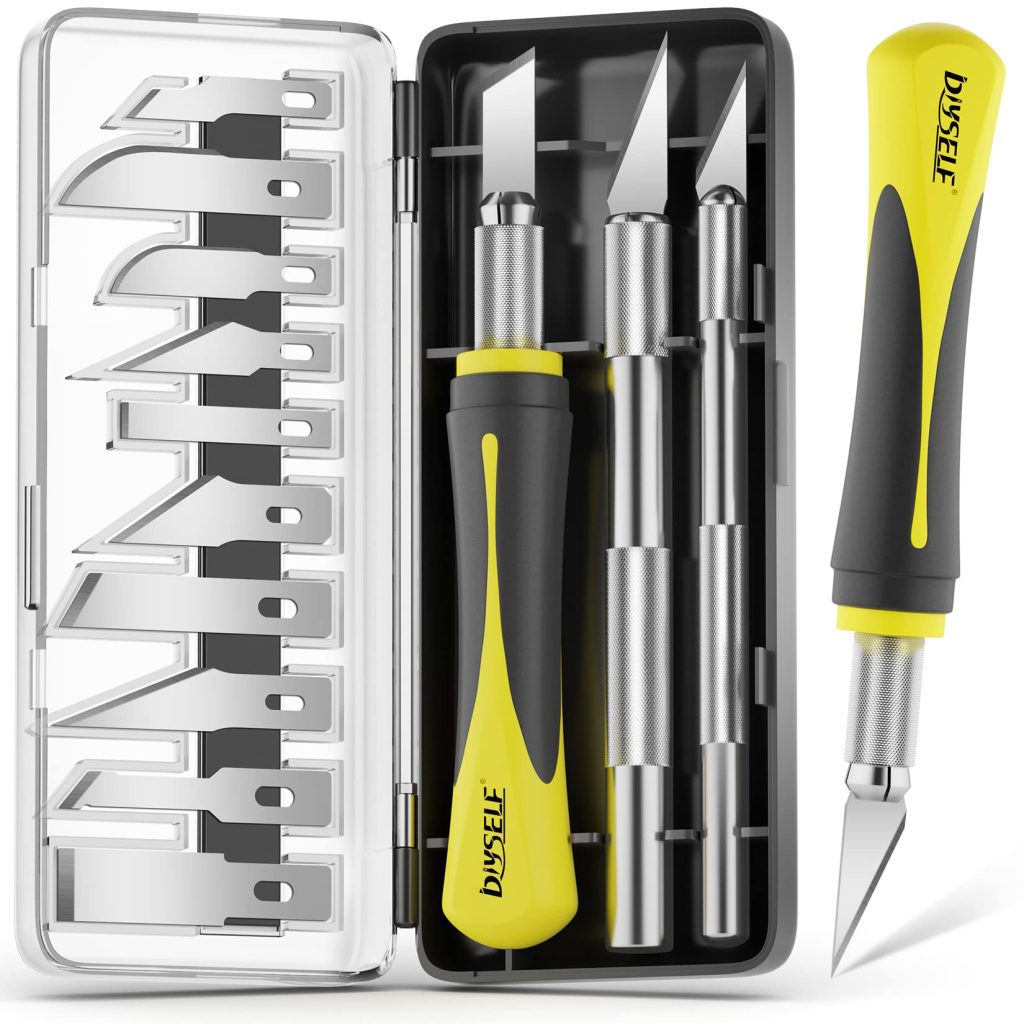
Using an art knife effectively requires proper technique and consideration for safety. Here are some general steps on how to use an art knife:
Select the Appropriate Blade:
Choose the blade that best suits your intended purpose. Different blade shapes and sizes are available, so consider the type of cut or task you want to accomplish. Ensure that the blade is securely attached to the handle.
Prepare Your Workspace:
Set up a clean and well-lit workspace. Place a cutting mat or a protective surface, such as a piece of cardboard or a self-healing mat, to safeguard your work surface and provide a stable cutting area.
Hold the Art Knife Correctly:
Hold the art knife firmly but not too tightly. Grasp the handle near the base, ensuring that you have a comfortable and secure grip. Maintain control and precision throughout the cutting process.
Apply Controlled Pressure:
Apply gentle and controlled pressure when making cuts. Start with light pressure and gradually increase as needed. Avoid excessive force, as it may cause the blade to slip or damage the paper or other materials.
Cutting Techniques:
Depending on the task, there are different cutting techniques you can employ:
Straight Cuts:
Hold the art knife perpendicular to the surface and make a smooth, controlled motion along the desired path.
Curved Cuts:
For curved lines or shapes, use short and deliberate strokes to follow the desired curve. Rotate the paper or move your hand as necessary to achieve the desired result.
Angled Cuts:
Adjust the angle of the blade as needed to achieve beveled or angled cuts. Tilt the blade slightly while maintaining control and precision.
Safety Precautions:
Prioritize safety when using an art knife:
Always cut away from your body and keep your fingers and hands clear of the blade’s path.
Work in a well-lit area to ensure clear visibility of the cutting area.
Use a cutting mat or a protective surface to prevent damage to your work surface and to ensure clean cuts.
Keep spare blades stored safely and handle them with care when replacing or disposing of them.
When not in use, retract the blade or cover it with a blade cover for safe storage.
Cleaning and Maintenance:
After use, clean the blade with a soft cloth or tissue to remove any debris or residue. If necessary, use a mild solvent recommended by the manufacturer. Ensure that the blade is dry before storing it.


